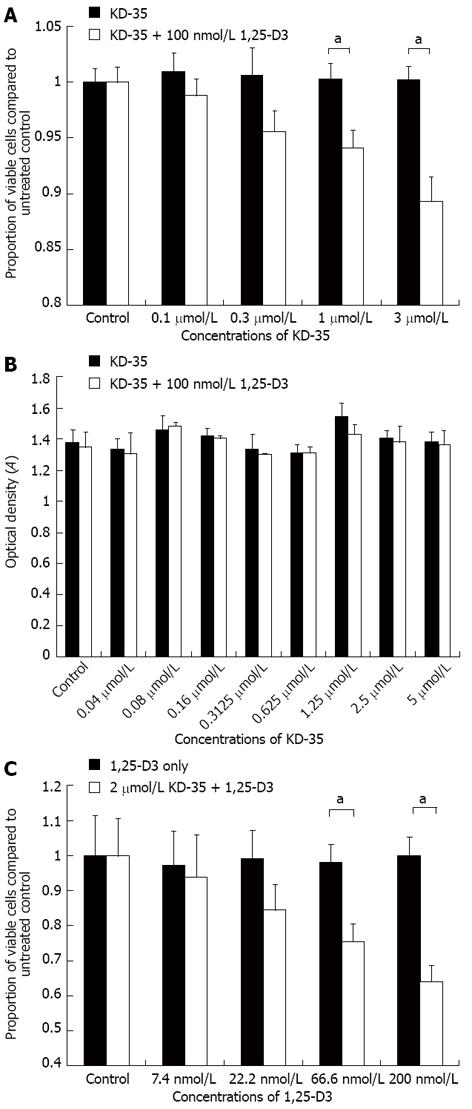Copyright
©2013 Baishideng Publishing Group Co.
World J Gastroenterol. May 7, 2013; 19(17): 2621-2628
Published online May 7, 2013. doi: 10.3748/wjg.v19.i17.2621
Published online May 7, 2013. doi: 10.3748/wjg.v19.i17.2621
Figure 3 Cell proliferation, lactate dehydrogenase activity and proliferation studies in the presence of KD-35 and 1,25-D3.
A: Changes in the number of viable Caco-2 cells (sulforhodamine-B staining) in the presence of different concentrations of KD-35. Selected wells were treated with 100 nmol/L active 1,25-D3. Data are means ± SD (aP < 0.05 between KD-35 and KD-35 + 1,25-D3 treated cells); B: Changes in the lactate dehydrogenase (LDH) activity of the cell culture supernatant in response to KD-35 with or without 1,25-D3. Data are means ± SD. No significant changes in LDH activity were seen after treatment; C: Changes in the proliferation of Caco-2 cells (5-bromo-2’-deoxyuridine incorporation) in response to different concentrations of 1,25-D3. White bars indicate combined treatment with the given 1,25-D3 concentration + 2 μmol/L KD-35. Data are means ± SD. Significance levels were calculated between each sample and the untreated control sample (aP < 0.05 between 1,25-D3 and 1,25-D3 + KD-35 treated cells).
- Citation: Kósa JP, Horváth P, Wölfling J, Kovács D, Balla B, Mátyus P, Horváth E, Speer G, Takács I, Nagy Z, Horváth H, Lakatos P. CYP24A1 inhibition facilitates the anti-tumor effect of vitamin D3 on colorectal cancer cells. World J Gastroenterol 2013; 19(17): 2621-2628
- URL: https://www.wjgnet.com/1007-9327/full/v19/i17/2621.htm
- DOI: https://dx.doi.org/10.3748/wjg.v19.i17.2621









